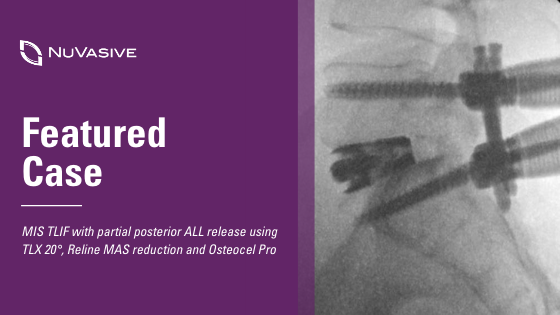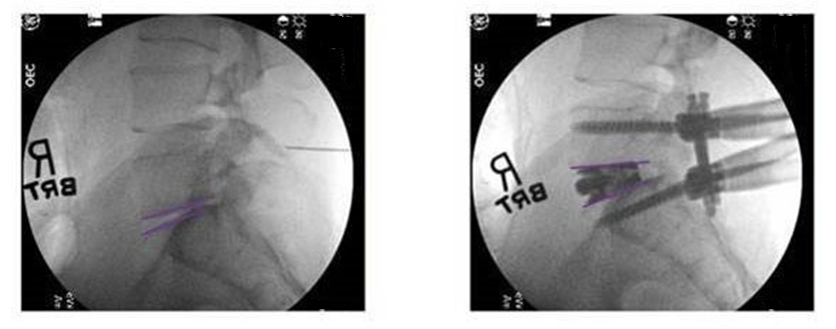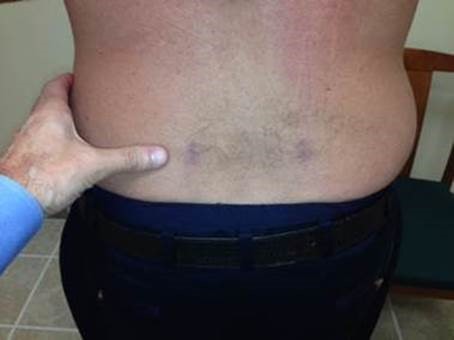
In our Featured Case series, NuVasive highlights outcome driven innovation, and the combination of access, interbody implants, biologics, fixation and enabling technologies to create a comprehensive system to address patient pathologies.
Dr. Javier Garcia-Bengochea, Neurosurgeon, Baptist Health, utilizes MIS TLIF, TLX 20°, Reline MAS reduction and Osteocel Pro to complete a less invasive L5-S1 TLIF procedure by releasing the ALL and both facets to mobilize the level for optimal lordosis with TLX 20°.

Patient Background:
- Gender: Male
- Age: 58
- History: Central disc herniation years ago treated nonoperatively with resolution of his radicular pain
- Diagnosis: Progressive DDD at L5-S1 with foraminal stenosis
“I used bilateral tubes, to perform complete facetectomies with bilateral disruption of the anterior annulus and ALL to “release” the interspace allowing for the TLX20 cage to fully expand. Reline MAS reduction screws assisted with the restoration of lordosis.” – Dr. Javier Garcia-Bengochea
![]() Surgical Plan:
Surgical Plan:
- Surgery: L5-S1 TLIF
- Access: Tubes
- Interbody implant: TLX 20°
- Fixation: Reline MAS reduction
- Biologics: Osteocel Pro
![]()
“While the LL isn’t significantly changed- there is some improvement in the straightening- look at the improvement in the thoracic kyphosis and restoration of the cervical lordosis as a consequence of the segmental correction at L5-S1.” – Dr. Javier Garcia-Bengochea


Patient follow-up visit shows very minimal scaring at the incision sites.
Learn more about TLIF and less invasive surgery.
Click here to read more featured cases.
Click here to access each of the above-referenced product specific Instructions for Use for important product safety information, including, but not limited to, indications, contraindications, warnings, precautions, and potential adverse effects.
An individual’s surgical procedure and recovery may deviate from what is described herein. Each case is unique and has its own independent considerations. It is the surgeon’s responsibility to discuss all relevant risks with the patient prior to surgery